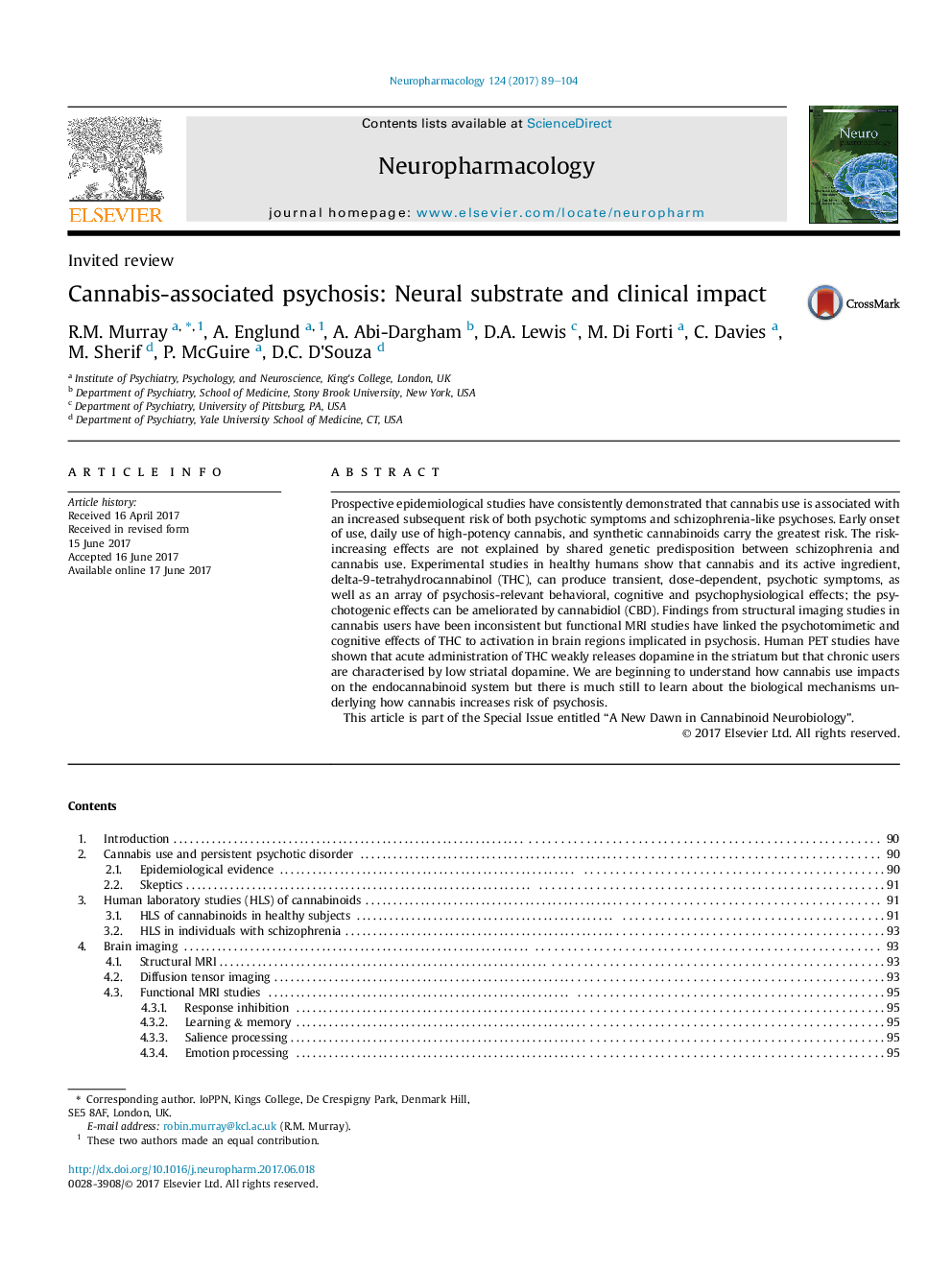| Article ID | Journal | Published Year | Pages | File Type |
|---|---|---|---|---|
| 5548741 | Neuropharmacology | 2017 | 16 Pages |
â¢Heavy use of cannabis increases the risk of later psychosis.â¢Administration of THC to volunteers induces transient psychosis and increases release of dopamine in striatum.â¢However in chronic users, synthesis of dopamine in striatum is decreased.â¢The proportion of THC in “street” cannabis is rising.â¢There are plausible biological explanations for the psychotogenic effects of cannabis.
Prospective epidemiological studies have consistently demonstrated that cannabis use is associated with an increased subsequent risk of both psychotic symptoms and schizophrenia-like psychoses. Early onset of use, daily use of high-potency cannabis, and synthetic cannabinoids carry the greatest risk. The risk-increasing effects are not explained by shared genetic predisposition between schizophrenia and cannabis use. Experimental studies in healthy humans show that cannabis and its active ingredient, delta-9-tetrahydrocannabinol (THC), can produce transient, dose-dependent, psychotic symptoms, as well as an array of psychosis-relevant behavioral, cognitive and psychophysiological effects; the psychotogenic effects can be ameliorated by cannabidiol (CBD). Findings from structural imaging studies in cannabis users have been inconsistent but functional MRI studies have linked the psychotomimetic and cognitive effects of THC to activation in brain regions implicated in psychosis. Human PET studies have shown that acute administration of THC weakly releases dopamine in the striatum but that chronic users are characterised by low striatal dopamine. We are beginning to understand how cannabis use impacts on the endocannabinoid system but there is much still to learn about the biological mechanisms underlying how cannabis increases risk of psychosis.This article is part of the Special Issue entitled “A New Dawn in Cannabinoid Neurobiology”.
